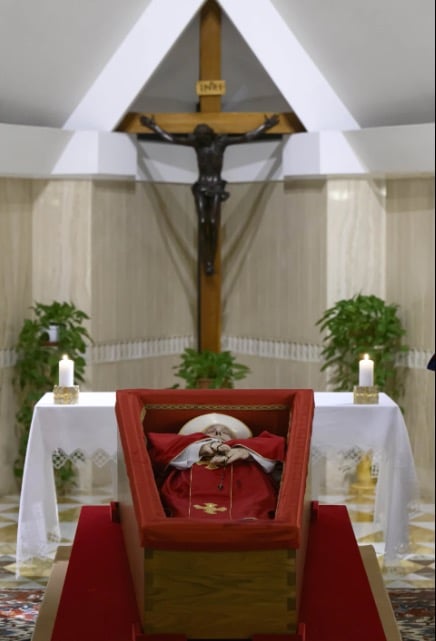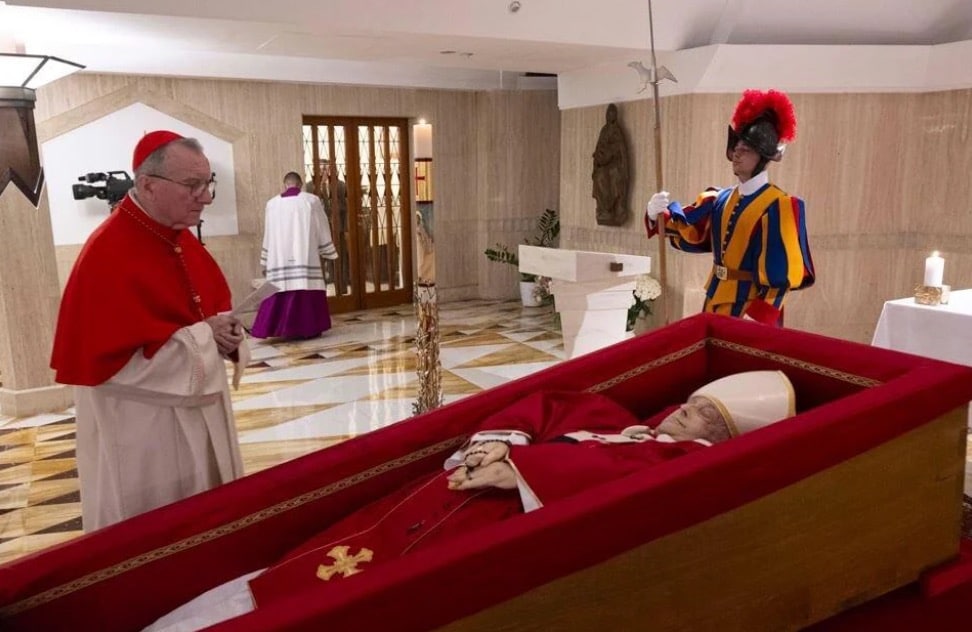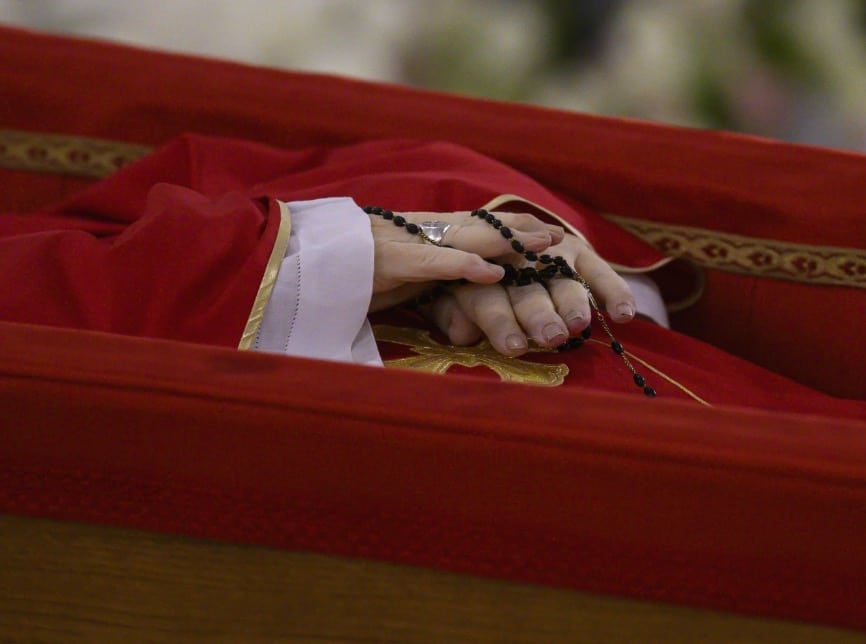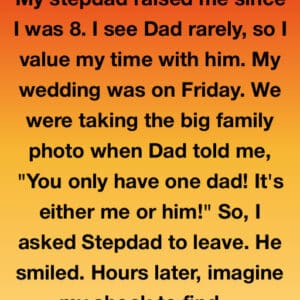The final images of Pope Francis lying in his coffin have gripped the hearts of millions, not only for their solemn beauty but for the stories they tell — stories of a man who reshaped the papacy by leading not with grandeur, but with grace, humility, and unwavering compassion.
Photographs released by the Vatican on Tuesday offered the first glimpse of the late pontiff’s body at rest — and each carefully chosen detail, from his attire to the objects placed by his side, spoke volumes about the values that guided his life. These intimate symbols, along with the burial plans now underway, confirm what many already knew: Pope Francis’s final wishes were not centered on pageantry or power, but on simplicity, service, and spiritual truth.
Pope Francis passed away at the age of 88 in the early hours of Easter Monday, following a massive cerebral stroke that led to irreversible heart failure. The stroke came after months of worsening health, including a prolonged battle with double pneumonia, kidney strain, and respiratory complications that had left him in and out of Rome’s Gemelli Hospital. But ultimately, he died peacefully at his home in Casa Santa Marta — the modest Vatican residence he had chosen over the more lavish papal palace.
In a powerful and quiet scene, the Pope was found early that morning after falling into a coma. Within thirty minutes of awakening, his body gave out. He was surrounded by silence and prayer, not clinical machines. In many ways, his death reflected the way he had lived — with humility, closeness to the people, and without ceremony.
By Tuesday, Vatican photographers captured his body lying in an open wooden casket, flanked by guards in solemn watch. The pontiff was dressed in red vestments — a liturgical color representing the blood of martyrs, as well as sacrifice and the passion of Christ. A simple rosary was folded gently into his hands, while his signature mitre and crozier were placed nearby. The mitre, his papal hat, and the pastoral staff were iconic symbols of his spiritual authority.
Also resting with him was a collection of coins minted during his papacy — a tradition honoring the legacy and time of each pope — and a sealed document known as a rogito, a biographical summary of his life and pontificate, to be buried with him forever. Perhaps most striking was the sight of the broken Fisherman’s Ring still adorning his right hand. Traditionally, the ring is ceremonially destroyed after a pope’s death to prevent forgeries and to mark the end of his reign. For Francis, this piece remains symbolically with him until his burial.
But perhaps the most telling detail of all was the casket itself. Gone was the elaborate triple coffin used for past popes — typically made of cypress, sealed in lead, and then encased again in oak. Instead, Pope Francis requested a simple wooden coffin lined with zinc, eschewing ornate trappings in favor of something far more modest. The message was unmistakable: this was a man who lived — and wished to die — in accordance with the Gospel’s most foundational teachings.
Another bold departure from tradition lies in where Pope Francis will be buried. Unlike nearly every other pope in recent memory, he will not be laid to rest beneath the grottos of St. Peter’s Basilica. Instead, his final resting place will be at the Basilica of Santa Maria Maggiore, nestled in Rome’s Esquilino neighborhood — a church deeply personal to him. As the first Latin American pope, he often visited the church before and after international trips to pray before the image of the Virgin Mary, Salus Populi Romani.
He once said he hoped to be buried there, and now, in death, that quiet wish will be honored.
The Vatican has confirmed that the funeral will be held on Saturday, April 26, at 10 a.m. in St. Peter’s Square. It will be an open-air ceremony, welcoming pilgrims, dignitaries, and clergy from around the world. But even the funeral procession will feel different this time. In another break from custom, the pope’s body will not be placed on a raised platform or bier. Instead, his coffin will rest on the floor of St. Peter’s Basilica, aligned with the pews, with the Paschal candle — symbolizing resurrection and eternal life — burning beside him.
Beginning Wednesday, the public will be able to pay their respects as his body lies in state. The Litany of Saints, a powerful and ancient chant calling upon generations of holy men and women, will echo through the cathedral as the procession enters. Leading it will be Cardinal Kevin Joseph Farrell, a longtime ally of Pope Francis, who now serves as the camerlengo, the official responsible for overseeing the Vatican during a papal interregnum.
Even in the days leading to his burial, the Pope’s commitment to accessibility and dignity remains apparent. Mourners will not gaze upon him from afar. Instead, the Vatican has created a space for closeness — where ordinary people can kneel beside the man who championed the ordinary.
Already, tributes have poured in from around the globe. From Buenos Aires to the Philippines, from Nairobi to the favelas of Brazil, people are mourning a pope who made them feel seen. Francis championed refugees, kissed the feet of prisoners, and called out corruption, even when it came from within his own ranks. He was the pope who rode the bus, chose plain shoes, and preferred to live among others rather than apart from them.
He also excommunicated members of organized crime, railed against systemic greed, and preached that true holiness came not from grandeur, but from tenderness. “Who am I to judge?” he once said in reference to LGBTQ+ Catholics — a statement that marked a cultural shift for the Church, though his position remained rooted in traditional doctrine.
In Argentina, his homeland, a week of national mourning has been declared. His funeral is expected to draw a level of international attention not seen since the death of Pope John Paul II. Yet, Pope Francis would likely have been uncomfortable with that comparison. He never sought adoration — only attention to the forgotten.
As the Vatican prepares for the upcoming conclave to elect a new pope, the world remains suspended in a moment of collective reflection. What will the future of the Catholic Church look like? And who will be chosen to carry forward the legacy of a man who redefined it?
Perhaps the clearest answer lies not in Rome, but in the homes, hearts, and humble corners of the world where Pope Francis quietly inspired change. His final resting place — simple, personal, and powerful — may become one of the most enduring symbols of what his papacy stood for: a return to the Gospel’s core, and a reminder that greatness, in the end, is measured not by thrones or crowns, but by compassion.








